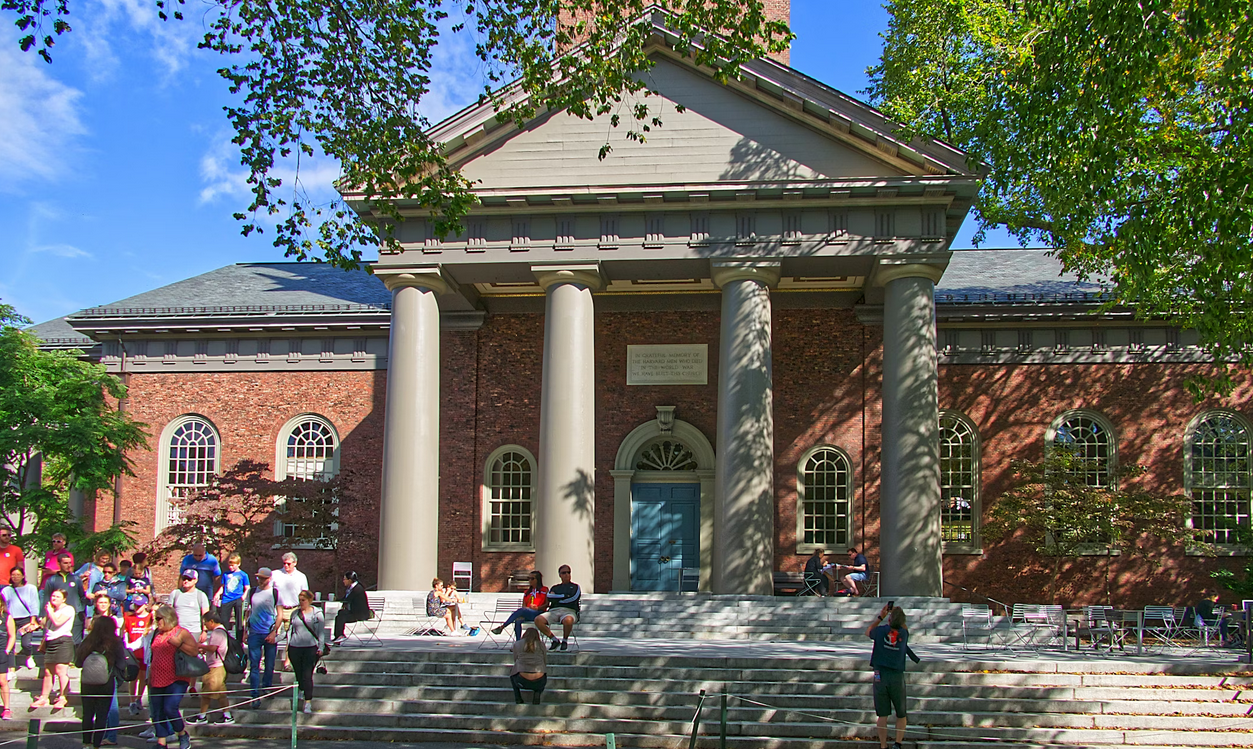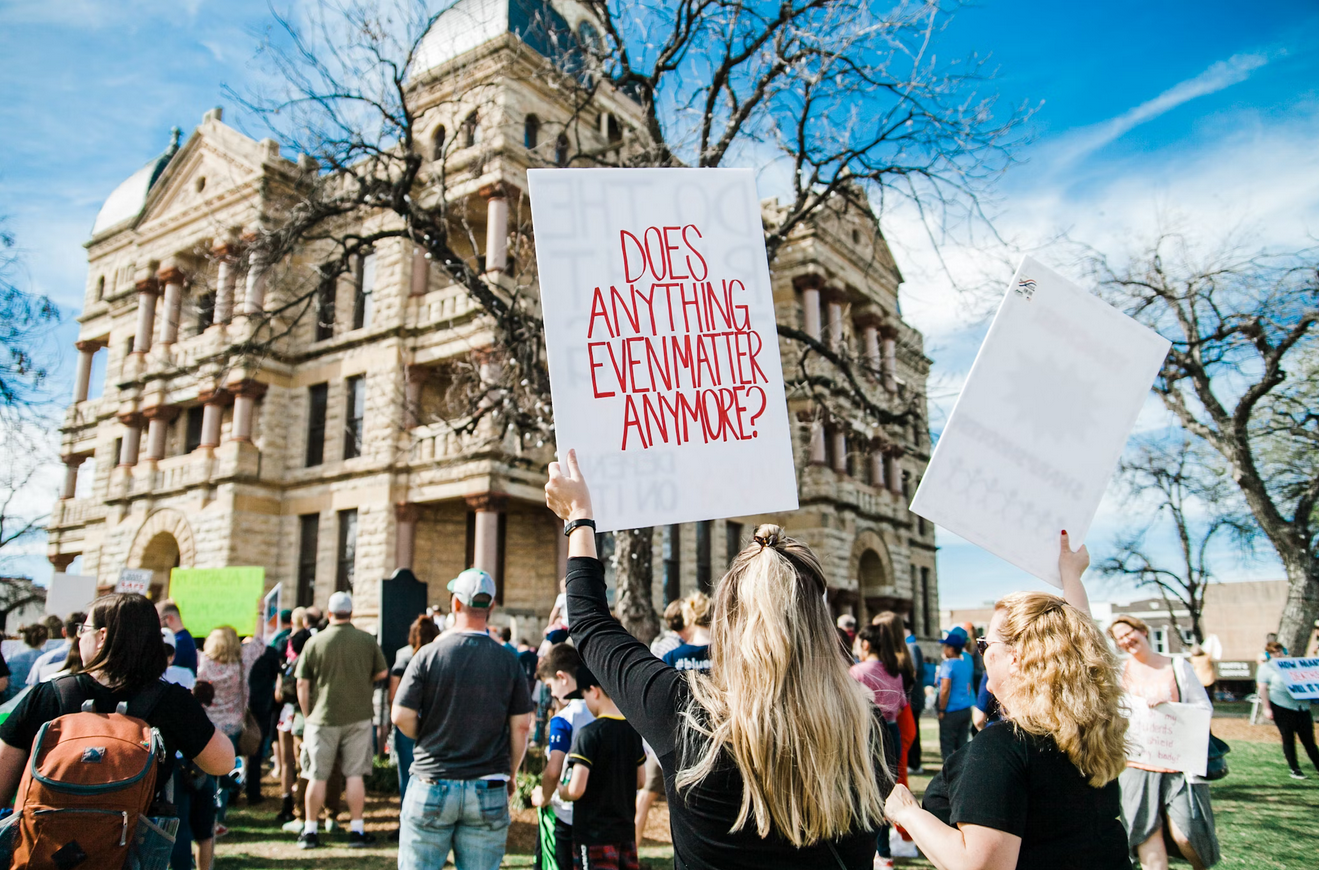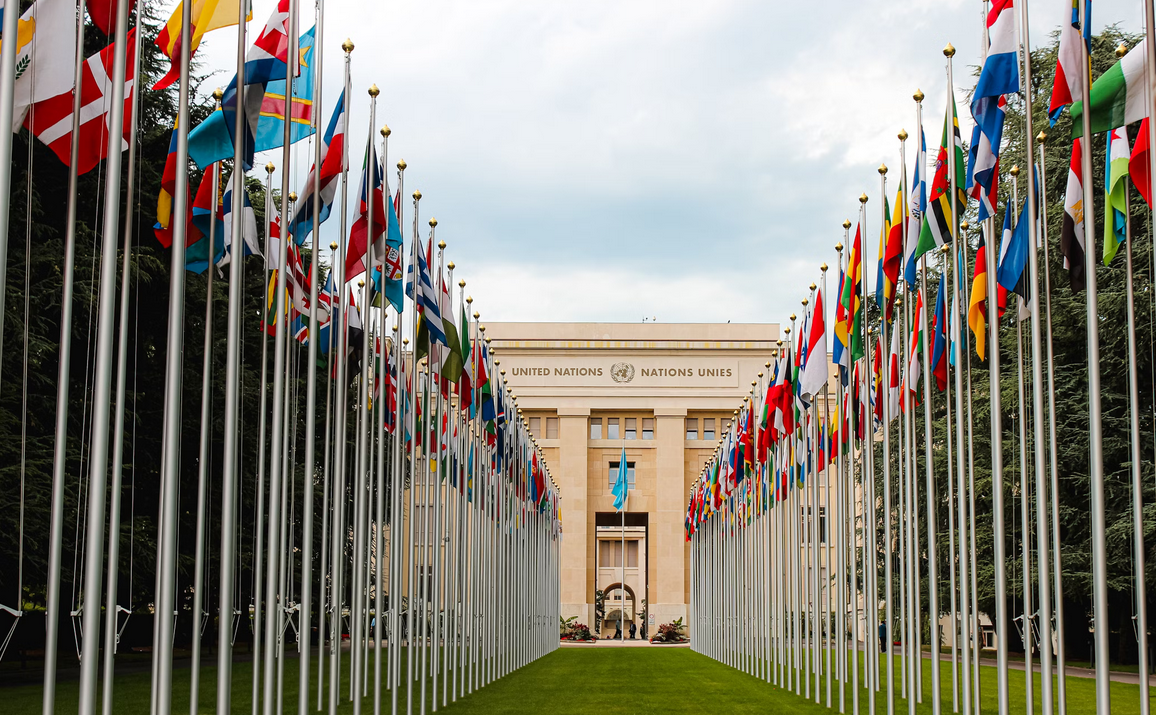
Experienced UIUC graduate student specializing in Math, Computer Science, and Writing
Availability:
Every day, 10:00am-10:00pm PST
Subjects:
Math
Computer Science
Writing
U.S. News: A Beauty Pageant for Colleges That Must Go
Last Updated:

- Applications to the Ivy League schools plus M.I.T, Duke University, University of Chicago, and Stanford have tripled since 2002 to almost 600,000 total
- As some universities drop standardized testing and students go to elite prep programs to get high scores, students will have to stand out based on essays and extracurricular activities
- Even though fewer jobs require four-year degrees and state schools are great, top schools still draw the most attention from researchers and innovative companies
Every year, US News rankings come out and everyone goes a little crazy.
To some, it’s a measure of prestige and achievement. High school and middle school students start deciding which competitive college is their dream school. College students who base their entire self-worth on going to a well-ranked college either receive a big ego boost or end up depressed for a while. Their tiger parents undergo the same rollercoaster of emotions, wondering what the neighbors will think. Many don’t realize this, but colleges actually pay millions of dollars in licensing fees to US News to use their rankings in marketing and promotional material.
To many others, it represents a beauty pageant that evaluates colleges based on superficial qualities and sketchy metrics. The Biden administration’s Secretary of Education, Miguel Cardona, recently called college ranking systems “a joke.” In 2022, Yale and Harvard both withdrew from participation in the US News rankings. A year later, one-third of the 196 law schools ranked annually refused to participate. Although they’re still featured in rankings by US News, the colleges don’t send data and usually criticize the ranking process.
Recently, as a graduate student with my admissions pressures behind me, I realized that everyone around me had been using US News rankings for so long that I had taken its credibility for granted. Eventually I found myself asking questions: what even is US News? Why are they ranking colleges? Why do colleges care so much about this system?
The US News rankings have a complicated and controversial history, featuring falsified data, questionable ranking methods, and claims around artificially deflating rankings to punish colleges. Some of its critics claim that college rankings are responsible for changing the priorities of top colleges to maximize their place in the rankings instead of providing students with a fair, quality educational experience and admissions process.
What happened in the rankings this year?
Most schools hold similar spots from year to year, but even one or two places slipping in the rankings can be a noisy affair. The top 3 this year are Princeton, MIT, and Harvard respectively. Stanford fell from a tie for third last year to fourth this year. There’s still speculation about why the rankings have been
UCLA held onto its title as the best public university for the 8th year in a row, much to the disappointment of many UC Berkeley students, families, and alumni who remain stuck at #2. My own undergraduate college, UC Irvine, ranks #9 among public colleges. My graduate college, University of Illinois Urbana-Champaign, ranks #5 among all Computer Science graduate programs behind a four-way tie for #1.
How did US News and World Report get started?
U.S. News and World Report began as a merger in 1948 between two weekly publications: the newspaper US News and the magazine World Report. Both were founded by conservative publisher and Princeton graduate David Lawrence. He started US News for businessmen and politicians, then merged it with World Report to become a popular national publication.
The merged magazine hit a circulation of 2 million copies at his time of death. In 1970, a few years before his passing, President Richard Nixon awarded him the Presidential Medal of Freedom.
At the time, the magazine cost less than 50 cents.
How did the ownership of US News and World Report change?
In 1962, Lawrence had sold the company to its employees, who continued a conservative lean. It stayed so popular that they were able to pay back their loans in one-third of the projected time.
They held eight domestic news bureaus by 1980, and then-Vice President George H.W. Bush laid the cornerstone for a new headquarters building in Washington D.C. In 1984, the company was sold from employees to Mortimer Zuckerman, a billionaire media magnate and real estate developer.
What was the very first US News college ranking?
In 1983, U.S. News makes its first ranking of American colleges:
Stanford
Harvard
Yale
Princeton
University of California - Berkeley
University of Chicago
University of Michigan at Ann Arbor
Cornell University / University of Illinois at Urbana-Champaign
Massachusetts Institute of Technology / Dartmouth College
At the time, some compared it to a simple “beauty pageant.” College presidents were asked to pick five schools that they felt provided the best undergraduate education from a list. There were four lists, based on the Carnegie Foundation’s classification system for colleges. Polls continued in 1985 and 1987, when it added graduate school rankings.
How did the old US News systems work?
In 1988, US News began using a quantitative ranking system that included a college’s:
rejection rate (which stayed until 2018)
average SAT/ACT scores
percent of accepted applicants who were ranked at the top of their high school class
percent of professors with doctorate degrees
student-to-faculty ratios
instructional budget
Endowment
Library budget
Percent of freshman who return
Percent of students who graduate in 4 years
National reputation (measured by surveying college administrators and admissions officers)
US News hasn’t always specified their weightings in this system, but they usually hadn’t changed much when they were revealed.
As the rankings were continuing to grow in popularity, US News added hospital rankings to its pages, overtaking Newsweek in 1991 and TIME in 1992. Over time, US News expanded its approach to all kinds of rankings.
Many have criticized this ranking system for being arbitrary. There’s no scientific reason that SAT/ACT scores should be weighted at 15% vs 20% or 25%, leading some to believe that the small changes in weightage from year-to-year is intended to generate rankings that US News wants to see. After all, US News receives millions of dollars in licensing from universities to use their rankings in marketing and promotional material, which has raised questions about conflicts of interest for years.
What were the first scandals and controversies around US News?
In 1994, a Wall Street Journal expose discovered that college administrators gave falsified data to US News as well as credit rating agencies, including average SAT scores, acceptance rates, and graduation rates. They found a discrepancy rate of 25%. 5 months after the expose, there were still over 160 schools with either incomplete or inaccurate numbers.
Reed College had always been skeptical about college rankings, but this scandal gave them the push they needed to refuse to participate in the survey for data as of 1995. Since then, many have argued, including Reed College itself, that their rankings were artificially decreased by US News for the refusal to participate. They suffered from the largest drop in rankings in the history of the system.
By 1997, peer assessment surveys counted for 22.5% of a college’s ranking — a completely subjective metric. Alma College surveyed 158 colleges and found that 84% of US News survey respondents had been asked to rank colleges they were unfamiliar with. 44% often left the rankings for some schools blank.
Although a student movement called FUNC (Forget U.S. News Coalition) tried to get Stanford to stop participating in the survey, Stanford stopped short of that, instead agreeing to provide objective data without answering reputational surveys. For the time being, most colleges would continue to participate.
How did US News become so popular?
One of the reasons US News is still so widely known by the public, while also being extremely controversial in the world of higher education, is their early entrance and dominance on the Internet.
The website usnews.com launched in 1995 and the print publications stopped in 2000, the same year they started paid advertising. Some of their writers, such as Michael Barone, were blogging in 2005 as the website reached 15 million page views. Their rankings and reviews found popularity on Google’s search engine, which had gone public just a year before.
In response, US News started ranking just about everything, often without clear and transparent methodology that third parties independently verify:
Health Plans
Places to Retire
Nursing Homes
Places to Live
Cars and Trucks
High Schools
How did the movement to criticize ranking systems start?
From 2005-2006, 26 of the 47 Canadian universities ranked by Maclean’s University Rankings survey (a Canadian college ranking magazine with similarities to US News) had refused to participate. This started a new set of conversations around bucking the college ranking system.
Lloyd Thacker of the Education Conservancy, an educational nonprofit that focused on college admissions, wrote The Presidents’ Letter, a case for US college presidents to boycott the “reputational survey” that asked administrators to rank colleges subjectively. He would go on to debate US News editor Brian Kelly about the rankings.
In 2007, the Annapolis Group — an organization representing about 130 liberal arts colleges in the US — discussed this letter and the “reputational survey”, and the majority of college presidents stated their intentions to refuse participation. Instead, they discussed plans for an alternative database that shared information about colleges for students and families to use when deciding which colleges are best for them.
It was around this time that criticisms were clearly agreed on by so many higher education institutions:
It’s impossible to use one number to describe a university’s performance
Ratings can be easily manipulated by both the colleges and the creator of the ranking system
Subjective qualities like “reputation” might be rooted in personal biases, and many college presidents simply don’t know enough about other colleges to make a rating
Some metrics are deeply flawed and cause terrible incentives. For example, the criteria about research expenditures only tracks how much money the university is spending on research, not the quality or impact of the research. This means universities would be rewarded for spending lots of money on unscientific, irresponsible projects instead of saving money to improve student experiences. Journalist Peter Sacks even calls the ranking system “little more than a pseudo-scientific tool… the perfect recipe for a self-perpetuating, class-based rankings system driven by brand names, marketing hype, and prestige”
Many metrics that are useful are devalued. At the time, only 1% of the ranking was influenced by student-to-faculty ratios even though that might be one of the most important factors in a student’s educational experiences in college.
That year, 61 signatures from college and university presidents were added to the letter, including San Francisco State University and Saint Mary’s College of California.
Why did so many college administrators oppose ranking systems?
Misleading Students Into Picking Less Compatible Colleges
The Chair of the Annapolis Group, Katherine Haley Will, argued that we “must encourage students to look inside their hearts and trust their instincts when it comes to choosing a college, not whether parents or friends think a university is cool or prestigious.” When we quantify something into rankings, we lose the ability to navigate with our individual preferences and needs in mind.
Penalizing Colleges for Not Participating
In 2007, former president of Sarah Lawrence College — one of the braver colleges taking a stand against rankings and standardized testing years before others did — Michele Tolela Myers wrote an expose about the US News ranking system.
She mentioned she was told by the director of data research at US News that without SAT scores provided by a college, US News would simply make up below-average SAT scores (-200 points) to lower their rankings, reflecting their belief that schools that don’t use the SAT are picking less capable students.
In fact, at a meeting of the North East Association for Institutional Research, US News made a presentation stating they will make up lower scores for universities that decline to send data for all categories, which artificially drives down the rankings of institution quality.
This was practically a threat made to every college and university in the world — by an online magazine using controversial methods to make oversimplified rankings for Google search results. And it mostly worked. Millions of people use the site to get their understanding of the educational landscape.
Rankings are Tied to Institutional Wealth More Than Education Quality
President of Muhlenberg College, Peyton Helm, was once asked by a trustee about what it would take for the college to be ranked within the top 5. Helm answered that a single check for $800 million would work without changing any other aspect of the college, because the US News rankings always correlate highly with institutional wealth. So even if a college like Harvard provided substandard educational environments, criteria that follow large endowments could still lead to high rankings.
Frances Lucas, president of Millsaps College, said she didn’t pay attention to the ranking methodology because of their high ratings at first. However, after the Annapolis Group meeting, she walked away believing that rankings were too closely tied to institutional wealth.
Historically black colleges and universities (HBCUs) can be especially hurt by this ranking system. Walter Kimbrough, president of Philander Smith College, argued that the emphasis on acceptance rates and institutional wealth means that programs dedicated to helping underprivileged groups will suffer in rankings, even if they offer incredible opportunities and educational quality to their students.
Rankings Drive Increases in Tuition
Given how much of the rankings are tied to institutional wealth factors, colleges are incentivized to rake in as much money as they can to stay competitive across many criteria. Some of these include research and instruction expenditures, regardless of their output, so colleges are incentivized to spend money for the sake of it as long as they can be classified as a relevant expenditure.
Arbitrary Budgeting Decisions can Impact Rankings
In 2022, Columbia University managed to improve its ranking by classifying money spent differently in government reports and consolidated financial statements. Financial statements show that the university reported spending $1.2 billion in patient care and $2 billion in instruction. However, when reported to the Department of Education, the university claimed to spend $3.1 billion in Instruction.
By classifying patient care expenses as instruction instead of research or another category, Columbia was able to boost its overall ranking in the US News formula and rise to 2nd place that year. Similar tactics employed across universities reveal a pattern of budget tricks incentivized by rankings, as was discovered by a math professor at Columbia.
The Entire Concept of Ranking is Fundamentally Broken
Many other presidents have spoken out:
Nancy Bekavac, Scripps College: “nothing can really improve a system that seeks to reduce 3,300 educational programs in American higher education to one set of numbers, and then rank them. College presidents, academic deans, and deans of admissions do not know enough about other institutions to make meaningful comparisons.”
Elizabeth S. Muhlenfeld, Sweet Briar College: “one of our colleagues likened it to trying to rank composers… How can you say that Beethoven and Brahms are better than Mahler or Mozart?”
Patricia McGuire, Trinity Washington University: “Some of the actual best colleges in this nation do not fare well in the US News survey because they do not have the wealth, big-time sports notoriety or public relations clout to influence the peer voting system.”
Robert G. Bottoms, DePauw University: “The fact that one quarter of a college’s ranking is based upon what is, in essence, its popularity, is very disturbing and we choose not to be part of the process.”
And it’s true — there is a disturbing cycle where popular universities use these rankings to stay popular, and they stay popular because they use these rankings. Because these rankings are tied to wealth, there’s a strong barrier keeping out a lot of other colleges from top positions.
What was the reaction to the criticism?
Muddying the Waters
US News, seeing the public criticisms reach new heights, crafted their own corporate responses to defend their ranking systems and methods.
They claimed that Sarah Lawrence was a unique case “still under consideration,” and that they “regularly adjust to changes in the educational environment” using “the best data available.”
But this doesn’t really line up with Myers’ experience seeing US News explicitly state multiple times that colleges without SAT requirements were taking worse students, or the allegations about Reed College being punished for withdrawing. Myers replied that US News had all the information it needed about Reed College to make an informed decision, casting more doubts on the biases of US News.
Accusations of Censoring In-demand Information
On the topic of their general methodology and peer rankings, editor Robert Morse argued that the ranking system doesn’t interfere with higher education. Instead, it satisfies a consumer demand from families for information about colleges, which are institutions that are rarely accountable to the public in their day-to-day operations.
He also insinuates that opposing ranking systems amounts to suppressing evidence, even “soft censorship,” which he believes is worse than incomplete and misleading evidence. It should be noted that much of the information US News uses is publicly available already
Praising the Value of “Intangibles”
He claims the reputational survey (which they called a “peer assessment survey”), has value because it allows them to measure “intangibles” that statistical data might now capture. However, this ignores the many college presidents who say they simply don’t know enough about other colleges to give an opinion.
He also argues that reputational boosts from the rankings can be valuable to students when looking for their first jobs or a graduate program, pointing to the practice of asking industry leaders to rate their competitors as commonly accepted when evaluating a company’s prestige or standing in the marketplace.
Yet, companies and colleges are very different. Companies are explicitly driven to maximize quantifiable metrics like shareholder value and profit-margins, which makes comparing performance for a ranking much easier. On the other hand, colleges are academic environments that encourage people to push their own potential and contribute knowledge to the world, which can’t readily be quantified into a ranking.
Why did some college presidents continue to support US News rankings?
Catharine Bond Hill, president of Vassar College, argued that although the rankings were disliked and effectively an “annual academic beauty pageant,” they would always exist and opposing them can make colleges seem like “we have something to hide.” She suggested third-party ranking systems should be added on top of the US News rankings so that students and families could compare different methods.
That way, a college like Sarah Lawrence that doesn’t accept SATs can rely on a ranking system that doesn’t penalize them for that, and students and families can decide whether they care about average SAT scores when determining which colleges they want to attend. Unfortunately, despite decades of attempts, no other ranking system came close to the popularity of US News, so this alternative never seemed viable to most colleges. US News almost had a monopoly in the college ranking media environment.
What does US News get out of these rankings?
Simply — money.
Not only are the rankings responsible for driving huge amounts of user traffic to their site, colleges pay millions of dollars to the site to license ratings for promotions in marketing.
That’s right, the rankings given by US News have to be licensed in order for colleges to use them. With a business model like this, many people have suggested that the organization is compromised with a conflict of interest.
We’ve already seen how institutional wealth is tied to higher rankings, which makes many suspicious that US News caters to criteria that favor wealthier colleges so that they can make the most in licensing fees. The arbitrary weights US News assigns to different criteria means they can subtly change rankings year-to-year while prioritizing the colleges they believe should be on top.
How did momentum against US News rankings keep building?
Over the last decade or so, more scandals and failures to adapt to criticism led more colleges to withdraw and protest the ranking systems. Here’s a running list we keep updated:
2012
George Washington University admitted that its fall 2011 freshmen class had 58% of students who were in the top 10% of their high school class, unlike the reported 78%
Claremont McKenna admits to overstating incoming student SAT/ACT scores among other data since 2005
Emory University admits to misreporting SAT/ACT scores, excluding the bottom ten percent of its students, and having unclear methodology at points since 2000
2013
Tulane University admits it misreported data from 2007 through 2011 about its GMAT scores and number of applicants for its full-time MBA program
2017
Austin Peay State
Dakota Wesleyan
Drury
Hampton
Oklahoma City
Saint Louis
Saint Martin’s
Randolph College
2018
University of Florida nursing college claimed to receive $1.6 million in grants from the National Institutes of Health, but in reality it had received none.
University of South Florida nursing college claimed it had received 10x the amount of grant money than it actually did ($15 million against $1 million)
Sam Houston State University education college claimed to spend $5.6 million when they actually spent less than $300,000.
Temple University admitted to submitting false data about its online MBA program from 2015 to 2018, leading to a dean’s conviction a few years later
2019
University of Oklahoma admits it has been providing incorrect data since 1999, including alumni giving rates.
2021
Eastern University admits its 2019 percentage of students who submitted SAT/ACT scores was 45%, not 100% as previously reported
Middle Georgia State University admitted that the average federal loan debt for its 2019 graduating class was over $30,000, not $9,800 as previously reported
2022
Columbia University admitted to using outdated and incorrect methods for reporting figures, such as the budget trick detailed above
Where are we now?
The condemnation from Secretary of Education Cardona signals frustration on behalf of policymakers, dedicated educators, and passionate students trying to secure affordable, high-quality college options.
With Harvard and Yale withdrawing their participation in the survey in the last couple years when they stand to be some of the biggest beneficiaries of this system, some want to believe that the tide is shifting and large universities are joining the boycott.
Unfortunately, it’s hard to see that boycott meaning much when most of the data US News uses is publicly available and colleges are still paying US News to license rankings for their marketing campaigns. It’s not a good sign for change when the people criticizing the problem are also conflicted into paying the problem for their own benefit.
Related Articles

International Students are Enrolling in the US at Fastest Rate in Decades

The Competition for College Seats is Not Sustainable

The Racist Legacy of Legacy Admissions

How Oil Companies Built a Pipeline into Universities

International Conflicts are Slowing Down Research Projects
